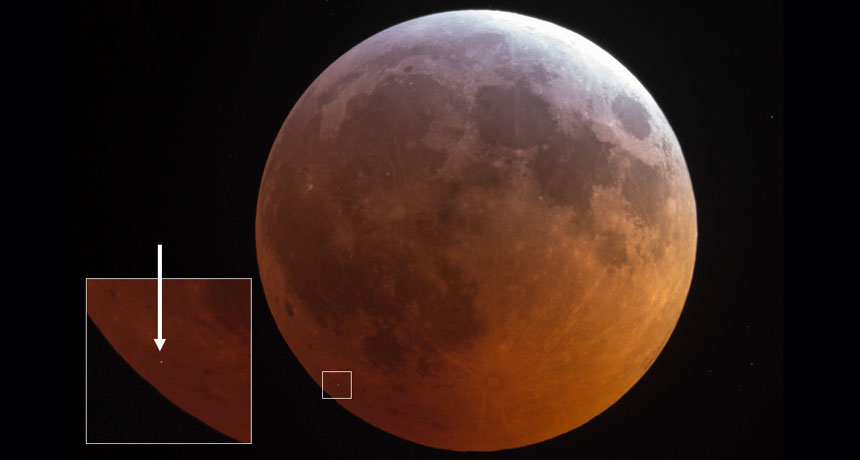A basketball-sized rock hit the moon during the last lunar eclipse
Professional and amateur astronomers used images and video to analyze the impact

LUCKY STRIKE Amateur astronomers caught lucky views of an object roughly the size of a basketball smacking into the moon and producing a bright flash of light (inset) during a lunar eclipse on January 21.
Fritz Pichardo/Dominican Astronomical Society







